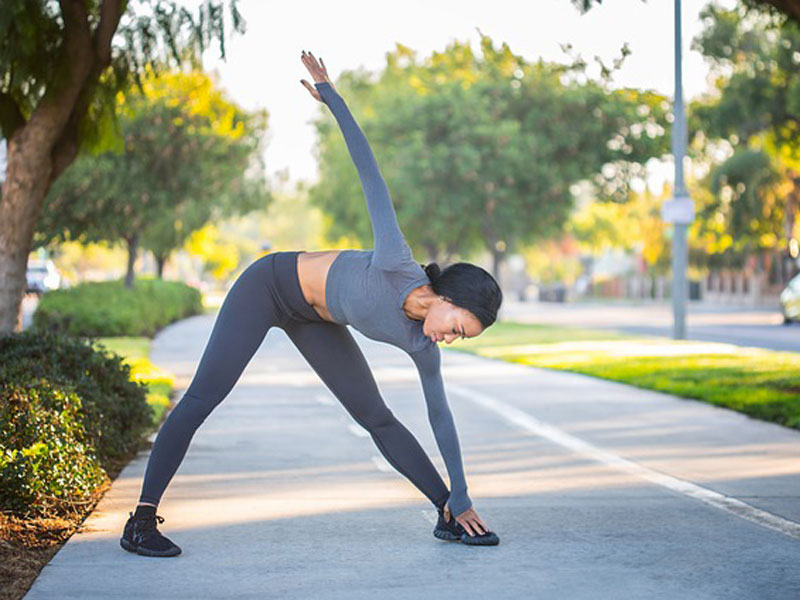
Dynamic Stretching | What is it? When to use it?
Most of you will probably have heard about the benefits of Dynamic Stretching as preparation for training. Traditionally most of the coaches out there will try to do at least some type of dynamic routine during warm-up to get their athletes ready and proceed with their training session. But what is exactly Dynamic Stretching and what do we know today about it?
Definition of Dynamic Stretching
A dynamic stretch is a type of functionally based stretching exercise that uses sport-generic and sport-specific movements to prepare the body for activity.
In other words, it’s a controlled sport specific exercise that emphasizes moving across the range of motion of each movement in a controlled manner. And because it’s about preparing you for an activity, it usually places an emphasis on the movement requirements of the activity you are about to do and not on individual muscles.
So in any case, the movement that you are going to choose for your dynamic stretching routine should mimic in some way the movement of the sport or activity that you’re preparing for. For example, a standing high knee lift stretch mimics the knee lift of a runner.
In a dynamic stretching routine, the muscles don’t relax during the exercises but instead are active through the range of motion (ROM). The result is a controlled and active ROM. And this is exactly what you’re trying to do, you’re preparing the ROM of your joints for the ROM that will encounter during the activity.
How Dynamic stretching is different from Mobility drills and Ballistic stretching?
The mobility drills are in most cases just another term for dynamic stretching. That is to say, they are the same thing.
On the other hand, although Ballistic stretching seems similar, it’s actually different on some crucial key factors that alter its effect. Ballistic stretching involves a less controlled muscular effort and uses a bouncing-type movement in which the end position is not held. In contrast, in Dynamic stretching the person moves dynamically through his range of motion (ROM) with controlled mobility drills, thus avoids bouncing.
Also, ballistic stretching is considered to be the riskiest in terms of injuries, due to the rapid, alternating movements or ‘bouncing’ at end-range of motion, and some scientists suggest that is no longer recommended. Nevertheless, I personally believe that every type of stretch is suitable for specific occasions and that ballistic stretching could be beneficial for specific movements.
The benefits of dynamic stretching:
- Increases body temperature.
- Increases the blood flow to the working muscles.
- Prepares the muscles for the activity that will encounter by practicing similar movements.
- Improves the ROM needed for the specific activity.
- Contributes to the mental preparation of the athlete for physical activity.
For all these reasons, dynamic stretching is the most preferred method of stretching during preparation for physical activity.
The basics for designing a Dynamic Stretching routine
The first thing you need to do is a thorough analysis of the movements that you want to prepare for. Once that’s clear, then you break them down in smaller and simpler movements that you can perform as stretching exercises. If that’s not possible, try to find exercises that replicate those movements in the best way. One thing you must be careful about is to move through the ROM that is required in your sport, neither less nor more. This way, you will achieve a highly specific dynamic stretching program.
In contrast to other types of stretching, one of the big advantages of Dynamic stretching is that it provides the opportunity to perform combined movements. This means that in some cases you have the opportunity to combine some isolated movements and get a more ‘’sport specific’’ stretching exercise.
You should always perform it for a series of repetitions and sets. In most cases, 10-15 repetitions for 3-4 sets will be enough. Each exercise should start with low intensity (ROM and speed) and gradually increase through the repetitions and sets. Your total Dynamic warm-up routine should last no more than 10 to 15 minutes.
References
- Mann, DP, and Jones, MT. Guidelines to the implementation of a dynamic stretching program. Strength Cond J 21:53-55, 1999.
- Medicine ACoS. ACSM’s guidelines for exercise testing and prescription. 7th ed. Baltimore: Lippincot Williams Wilkins; 2006.
- Bandy, WD, Irion, JM, and Briggler, M. The effect of static stretch and dynamic range of motion training on the flexibility of the hamstring muscles. J Orthop Sports Phys Ther 27:295-300, 1998.
- Hedrick, A. Flexibility, body-weight and stability ball exercises. In NSCA’s Essentials of Personal Training. Earle, RW, and Baechle, TR, eds. Champaign, IL: Human Kinetics, 268-294, 2004.



